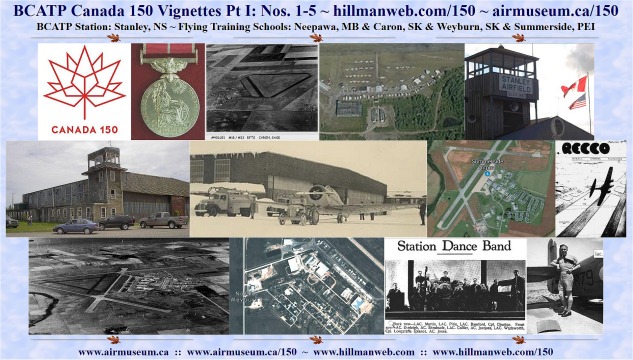001/150
No. 35 Elementary Flying Training School ~ Neepawa
Manitoba
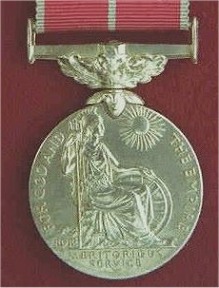 No.
35 Elementary Flying Training School opened in Neepawa Manitoba
on January 30 1944 under management of the Royal Air Force. In January
1944, the RAF abandoned the station and operations were taken over by the
Royal Canadian Air Force as No. 26 RCAF EFTS. It closed on August 25 1944.
No.
35 Elementary Flying Training School opened in Neepawa Manitoba
on January 30 1944 under management of the Royal Air Force. In January
1944, the RAF abandoned the station and operations were taken over by the
Royal Canadian Air Force as No. 26 RCAF EFTS. It closed on August 25 1944.
Training aircraft included the De Havilland Tiger Moth
and Fairchild Cornell. This station also served as the No. 5 Satellite
Equipment Holding Unit which disposed many Tiger Moth and Avro Anson aircraft
when they were no longer required for training.
An interesting footnote for Neepawa is an award given
to a RAF Sergeant named Victor Francis Bateman. In January 1946 he received
the British Empire Medal for his service at No. 35 SFTS. His citation includes:
``This non-commissioned officer has been in charge of the Royal Air Force
Orderly Room since the transfer to Civilian Operation and (he) has done
a tremendous amount of work. His application to duty has been of an extremely
high order… Particularly during the change-over ¬¬of this unit
from Service to Civilian operation and from Royal Air Force personnel to
Royal Canadian Air Force personnel has this non-commissioned officer performed
a prodigious amount of work.’’
This award is a good illustration of the valuable contributions
made by a multitude of non-flying, non-combatant Commonwealth airmen and
airwomen to the war effort. That group included dozens of trades including
orderlies, typists, drivers, mechanics, cooks and supervisors without whom,
winning World War II would have been impossible for the Allies.
002/150
No. 33 Elementary Flying School ~ Caron Saskatchewan
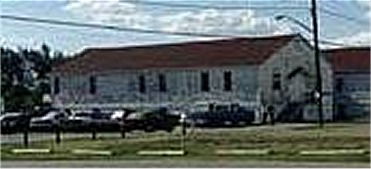 No.
33 Elementary Flying School was a British Commonwealth
Air Training Plan facility opened to train Royal Air Force personnel as
pilots in Caron Saskatchewan. It was located 25 kilometers west
of Moose Jaw Saskatchewan on what is now the Trans-Canada Highway. It was
open between January 5 1942 and January 14 1944 for a total of 739 days.
The cost to open the school was $1,169,319.70 ($16.7 million in 2016 dollars)
and had an initial personnel compliment of 335 and 56 De Havilland Tiger
Moth aircraft. By April 1942, staff and students numbers had risen to 700
and training was going full tilt with the Tiger Moths putting in 275 flying
hours per day. In January 1943, 100 Fairchild Cornell aircraft took the
place of the Tiger Moths.
No.
33 Elementary Flying School was a British Commonwealth
Air Training Plan facility opened to train Royal Air Force personnel as
pilots in Caron Saskatchewan. It was located 25 kilometers west
of Moose Jaw Saskatchewan on what is now the Trans-Canada Highway. It was
open between January 5 1942 and January 14 1944 for a total of 739 days.
The cost to open the school was $1,169,319.70 ($16.7 million in 2016 dollars)
and had an initial personnel compliment of 335 and 56 De Havilland Tiger
Moth aircraft. By April 1942, staff and students numbers had risen to 700
and training was going full tilt with the Tiger Moths putting in 275 flying
hours per day. In January 1943, 100 Fairchild Cornell aircraft took the
place of the Tiger Moths.
Of the 1837 pilots who completed elementary training at
Caron, 1833 were from the Royal Air Force, three were Royal Canadian Air
Force and one was Royal Australian Air Force. Pilots averaged 50 flying
hours over the eight weeks of their training. Ten airmen were killed while
training at Caron and are buried in the local cemetery.
The current population of Caronport is 919. Before the
BCATP came to town… there was no town. Caron is a municipality and Caronport,
now the largest village in Saskatchewan, was born when locals combined
the words Caron and Airport.
Briercrest College and Seminary, along with the associated
Caronport High School, became the heart and soul of the community in 1946
when school founder, Mr. Sinclair Whittaker, purchased No. 33 SFTS from
crown assets. With modifications to the station’s barracks and other buildings,
the RAF school became an instant home for the college, seminary and high
school which served the community well. A number of highly modified BCATP
buildings remain while the last RAF dormitory was demolished in 2005. Runways
were used for a time by CFB Moose Jaw as a relief field but no longer function
as such. Portions of the taxiways have been used as access roads to mobile
home lots.
Click for larger images
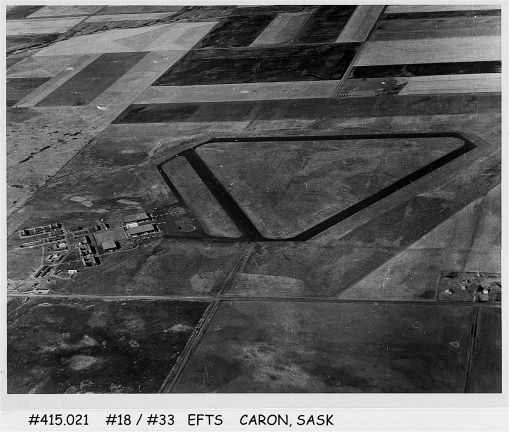
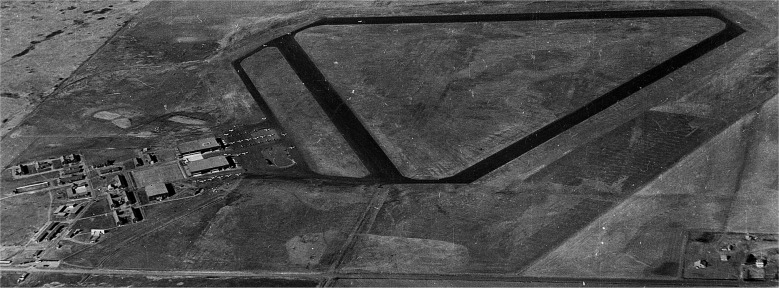
003/150
British Commonwealth Air Training Plan Station - Stanley
Nova Scotia
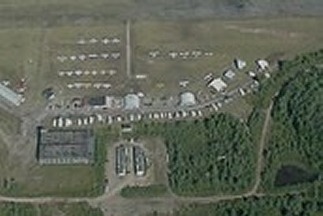 No.
17 Elementary Flying Training School opened in Stanley Nova Scotia on
March 17 1941 and is located 15 km. east of Windsor Nova Scotia. It was
open as a BCATP School for 1033 days, closing on January 1 1944. The RCAF
utilized Fleet Finch and De Havilland Tiger Moth aircraft for elementary
flying training.
No.
17 Elementary Flying Training School opened in Stanley Nova Scotia on
March 17 1941 and is located 15 km. east of Windsor Nova Scotia. It was
open as a BCATP School for 1033 days, closing on January 1 1944. The RCAF
utilized Fleet Finch and De Havilland Tiger Moth aircraft for elementary
flying training.
At its busiest, No. 17 EFTS was training four classes
of 30 students every six weeks.
No. 17 EFTS was one of the smaller BCATP schools. The
station had one hangar with control tower attached and barracks to house
360 trainees and support staff. A post war aerial photo shows the barracks
and hangar. A current photo shows the RCAF buildings gone and a small,
active airport in use today.
When built, the Stanley hangar was the largest building
in Hants County Nova Scotia. It was torn down in 2005. Current aerial photo
and hangar photos are from the Stanley Sport Aviation Association web site.
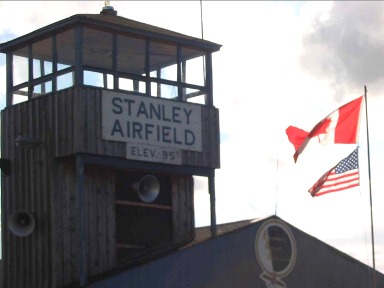 .
.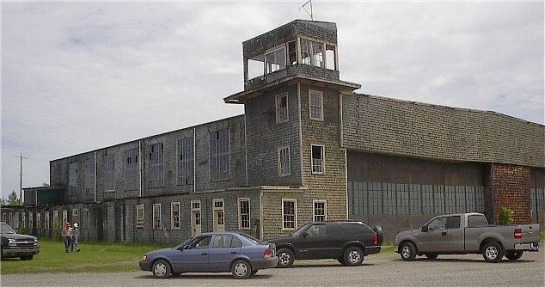
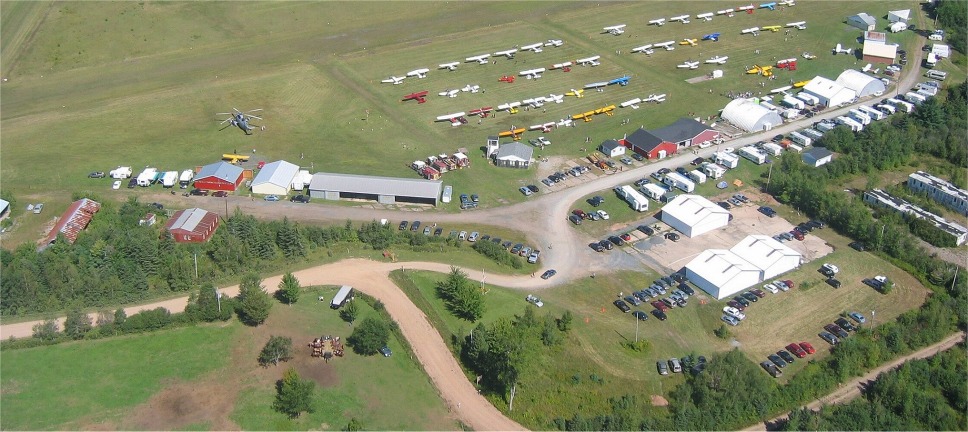
Stanley Sport Aviation Association
004/150
No. 9 Service Flying Training School (SFTS) ~ Summerside,
Prince Edward Island
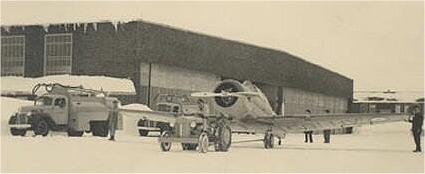 Summerside,
Prince Edward Island was the site of three British
Commonwealth Air Training Plan schools during World War II. No. 9 Service
Flying Training School (SFTS) opened on January 6 1941 and closed on
July 8 1942 after operating for 548 days in service to the British Commonwealth
Air Training Plan. No. 9 SFTS moved to Centralia Ontario to make room for
No. 1 General Reconnaissance School (GRS) which took over operation of
the BCATP station from July 6 1942 to February 3 1945, operating for a
total of 943 days.
Summerside,
Prince Edward Island was the site of three British
Commonwealth Air Training Plan schools during World War II. No. 9 Service
Flying Training School (SFTS) opened on January 6 1941 and closed on
July 8 1942 after operating for 548 days in service to the British Commonwealth
Air Training Plan. No. 9 SFTS moved to Centralia Ontario to make room for
No. 1 General Reconnaissance School (GRS) which took over operation of
the BCATP station from July 6 1942 to February 3 1945, operating for a
total of 943 days.
When No. 9 SFTS opened for business, Summerside had about
5000 residents. At its peak, the BCATP stations increased the town’s population
by 2000. Two Summerside companies - Curran & Briggs Ltd. and M.F. Schurman
Co. Ltd. were the contractors responsible for the construction of the station
which opened ahead of schedule. Both companies still exist today.
The first SFTS students graduated and received their wings
on April 16 1941. They flew Harvard aircraft for training. Members of the
RCAF Women’s Division were first assigned to Summerside in March 1942.
The primary purpose of No. 1 General Reconnaissance School
was to supply trained pilots and navigators for general reconnaissance
on the North Atlantic Ocean. Run by RCAF personnel, No. 1 GRS was modelled
after No. 31 GRS which was relocated to Charlottetown PEI from Britain
early in the war. It was Royal Air Force managed. No. 1 GRS utilized Avro
Anson aircraft for training. It opened with 1855 personnel in July 1945
and peaked at 2147 including 676 students in May 1944.
Pilots trained for nine weeks and navigators for four.
Having qualified as Pilots and Navigators prior to coming to No. 1 GRS,
these airmen spent a great deal of time as passengers in aircraft over
the ocean, honing their dead-reckoning skills. Most of the 6000 pilots
and navigators who trained at No. 1 GRS went on to serve in Coastal Command
assigned to anti-submarine warfare. They protected Allied convoys with
vital supplies and personnel coming and going to Britain and other Allied
locations. Four issues of the station magazine ``RECCO’’ were published
by No. 1 GRS.
After No. 1 GRS closed, the No. 1 Reconnaissance and Navigation
School was opened on September 16 1945 combining existing resources from
Summerside with those of the No. 2 Air Navigation School in Charlottetown
which had been closed. Total personnel at the new school amounted to 1855
in July 1945. This school operated for short time and then was closed in
1946 only to be reopened in 1947 as No. 1 Air Navigation School. The air
station continued in one form or another until 1991 when it closed for
good and its military units were transferred to CFB Greenwood.
After closure, the base was transferred in total to the
Slemon Park Corporation which renamed it Slemon Park. A number of private
and public sector organizations took up residence and started business
operations. The airfield was separated from Slemon Park and now operates
as Summerside Airport which is open to general aviation. When the City
of Summerside was created in 1995, a portion of the station, the residential
area of Slemon Park, became a part of the city.
In the attached WWII air photo – five hangars and about
30 other building are visible. A 2017 Google Maps air photo shows three
of the hangars and a dozen or so buildings from WWII still in existence
and providing a useful purpose to local business. Another photo shows the
cover of the No. 1 GRS station magazine ``RECCO.’’ The fourth photo shows
a hangar, fuel tender and Harvard at Summerside during WWII.
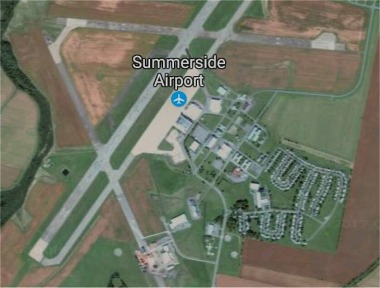 .
.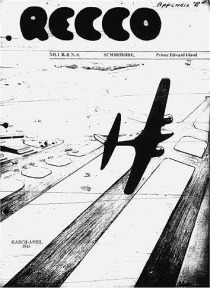
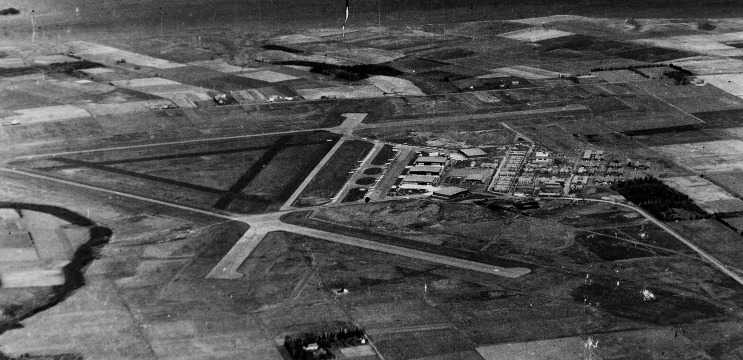
005/150
No. 41 Service Flying Training School ~ Weyburn, Saskatchewan
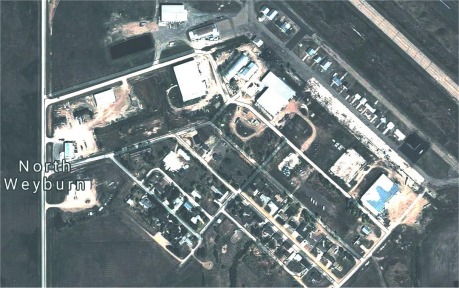 In
1941, the Town of Weyburn Saskatchewan had a population of 6,119
people. The Royal Air Force came to town on January 5 1942 when No.
41 Service Flying Training School was opened under the management of
the British Commonwealth Air Training Plan. It continued as a RAF school
for 747 days, closing on January 22 1944. The RCAF took over the No. 8
Service Flying Training School on January 24 1944. It continued operations
for 158 days until it was closed on June 30 1944 and moved to Moncton New
Brunswick.
In
1941, the Town of Weyburn Saskatchewan had a population of 6,119
people. The Royal Air Force came to town on January 5 1942 when No.
41 Service Flying Training School was opened under the management of
the British Commonwealth Air Training Plan. It continued as a RAF school
for 747 days, closing on January 22 1944. The RCAF took over the No. 8
Service Flying Training School on January 24 1944. It continued operations
for 158 days until it was closed on June 30 1944 and moved to Moncton New
Brunswick.
No. 41 SFTS graduated 1,055 pilots who flew a grand total
of 180,000 hours in Avro Anson and Harvard aircraft. Of the 1,055, 1011
were Royal Air Force airmen, 35 were Royal Canadian Air Force airmen, 2
were Royal New Zealand Air Force airmen and seven were Royal Australian
Air Force airmen. The station had 146 aircraft of which 136 were Ansons
and 10 were Harvards. Seventeen airmen were killed while in training at
Weyburn. The No. 41 SFTS Station Magazine was ``The Flying Gopher.’’
Post war, the station was home to a children’s psychiatric
hospital and then, the Western Christian College from 1957 to 1989. Three
of the original five hangars still exist today and two of the three runway
legs service Weyburn airport. The site is home to a number of commercial
enterprises and residential housing.
In the attached photos, it is interesting to note railroad
tank cars in the distance of one of the photos – those of us who only see
railroad transport today as long-distance point-to-point service, don’t
realize that during World War II, railroad was the primary mode of transportation
for just about all freight and people, long and short distances. The Google
image shows the Weyburn airport today. We also see images of the station
dance band, a proud airman beside his Harvard and an air photo of the station
during WWII.
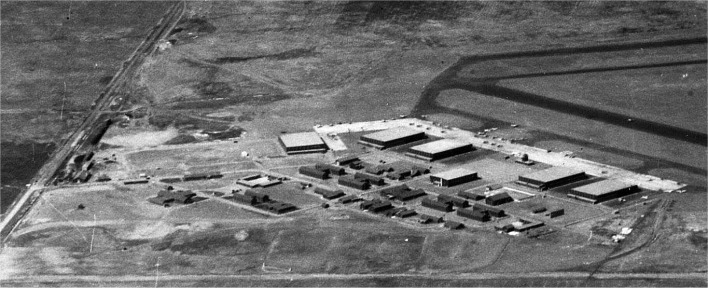
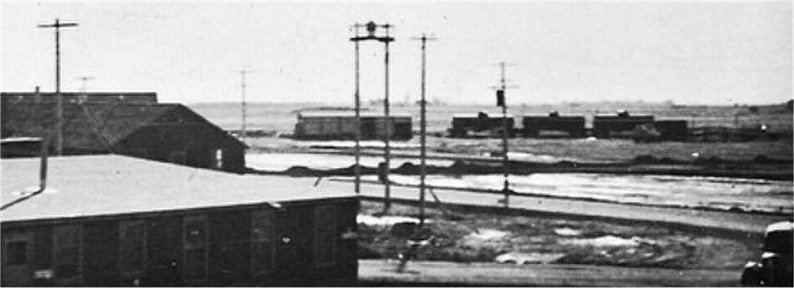
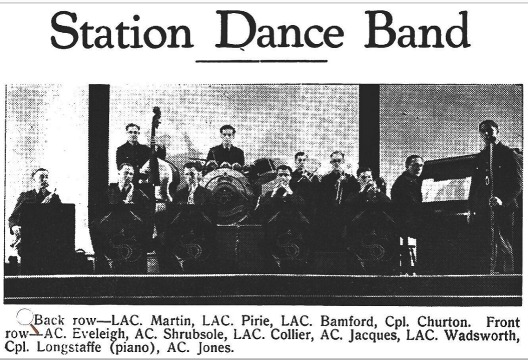
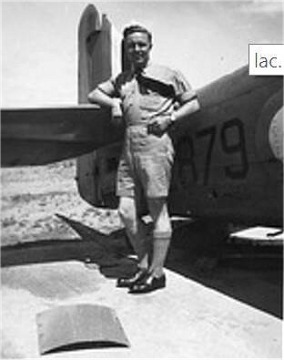
 No.
35 Elementary Flying Training School opened in Neepawa Manitoba
on January 30 1944 under management of the Royal Air Force. In January
1944, the RAF abandoned the station and operations were taken over by the
Royal Canadian Air Force as No. 26 RCAF EFTS. It closed on August 25 1944.
No.
35 Elementary Flying Training School opened in Neepawa Manitoba
on January 30 1944 under management of the Royal Air Force. In January
1944, the RAF abandoned the station and operations were taken over by the
Royal Canadian Air Force as No. 26 RCAF EFTS. It closed on August 25 1944.
 No.
33 Elementary Flying School was a British Commonwealth
Air Training Plan facility opened to train Royal Air Force personnel as
pilots in Caron Saskatchewan. It was located 25 kilometers west
of Moose Jaw Saskatchewan on what is now the Trans-Canada Highway. It was
open between January 5 1942 and January 14 1944 for a total of 739 days.
The cost to open the school was $1,169,319.70 ($16.7 million in 2016 dollars)
and had an initial personnel compliment of 335 and 56 De Havilland Tiger
Moth aircraft. By April 1942, staff and students numbers had risen to 700
and training was going full tilt with the Tiger Moths putting in 275 flying
hours per day. In January 1943, 100 Fairchild Cornell aircraft took the
place of the Tiger Moths.
No.
33 Elementary Flying School was a British Commonwealth
Air Training Plan facility opened to train Royal Air Force personnel as
pilots in Caron Saskatchewan. It was located 25 kilometers west
of Moose Jaw Saskatchewan on what is now the Trans-Canada Highway. It was
open between January 5 1942 and January 14 1944 for a total of 739 days.
The cost to open the school was $1,169,319.70 ($16.7 million in 2016 dollars)
and had an initial personnel compliment of 335 and 56 De Havilland Tiger
Moth aircraft. By April 1942, staff and students numbers had risen to 700
and training was going full tilt with the Tiger Moths putting in 275 flying
hours per day. In January 1943, 100 Fairchild Cornell aircraft took the
place of the Tiger Moths.


 No.
17 Elementary Flying Training School opened in Stanley Nova Scotia on
March 17 1941 and is located 15 km. east of Windsor Nova Scotia. It was
open as a BCATP School for 1033 days, closing on January 1 1944. The RCAF
utilized Fleet Finch and De Havilland Tiger Moth aircraft for elementary
flying training.
No.
17 Elementary Flying Training School opened in Stanley Nova Scotia on
March 17 1941 and is located 15 km. east of Windsor Nova Scotia. It was
open as a BCATP School for 1033 days, closing on January 1 1944. The RCAF
utilized Fleet Finch and De Havilland Tiger Moth aircraft for elementary
flying training.
 .
.

 Summerside,
Prince Edward Island was the site of three British
Commonwealth Air Training Plan schools during World War II. No. 9 Service
Flying Training School (SFTS) opened on January 6 1941 and closed on
July 8 1942 after operating for 548 days in service to the British Commonwealth
Air Training Plan. No. 9 SFTS moved to Centralia Ontario to make room for
No. 1 General Reconnaissance School (GRS) which took over operation of
the BCATP station from July 6 1942 to February 3 1945, operating for a
total of 943 days.
Summerside,
Prince Edward Island was the site of three British
Commonwealth Air Training Plan schools during World War II. No. 9 Service
Flying Training School (SFTS) opened on January 6 1941 and closed on
July 8 1942 after operating for 548 days in service to the British Commonwealth
Air Training Plan. No. 9 SFTS moved to Centralia Ontario to make room for
No. 1 General Reconnaissance School (GRS) which took over operation of
the BCATP station from July 6 1942 to February 3 1945, operating for a
total of 943 days.
 .
.

 In
1941, the Town of Weyburn Saskatchewan had a population of 6,119
people. The Royal Air Force came to town on January 5 1942 when No.
41 Service Flying Training School was opened under the management of
the British Commonwealth Air Training Plan. It continued as a RAF school
for 747 days, closing on January 22 1944. The RCAF took over the No. 8
Service Flying Training School on January 24 1944. It continued operations
for 158 days until it was closed on June 30 1944 and moved to Moncton New
Brunswick.
In
1941, the Town of Weyburn Saskatchewan had a population of 6,119
people. The Royal Air Force came to town on January 5 1942 when No.
41 Service Flying Training School was opened under the management of
the British Commonwealth Air Training Plan. It continued as a RAF school
for 747 days, closing on January 22 1944. The RCAF took over the No. 8
Service Flying Training School on January 24 1944. It continued operations
for 158 days until it was closed on June 30 1944 and moved to Moncton New
Brunswick.




